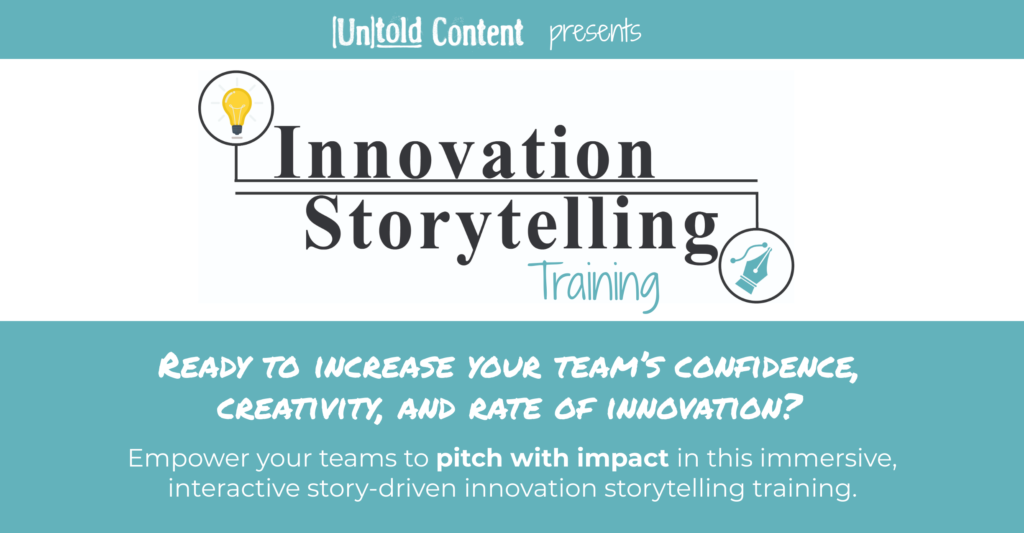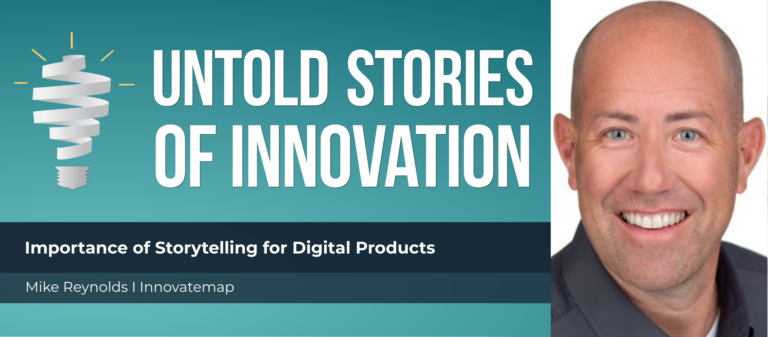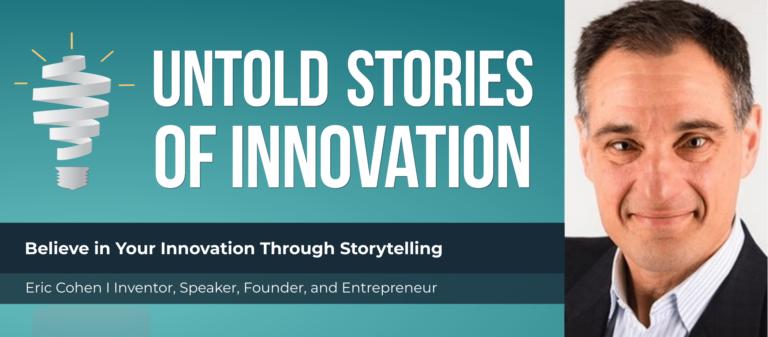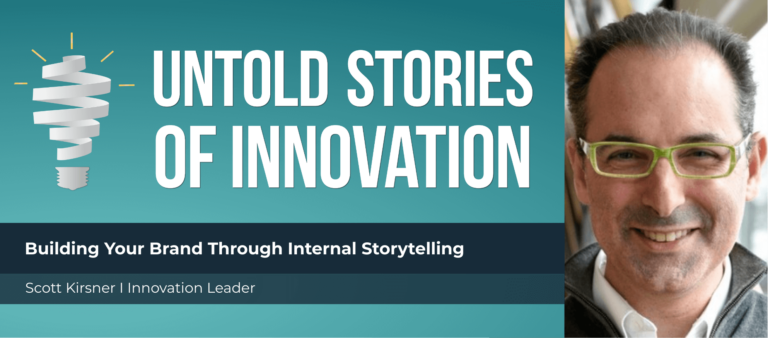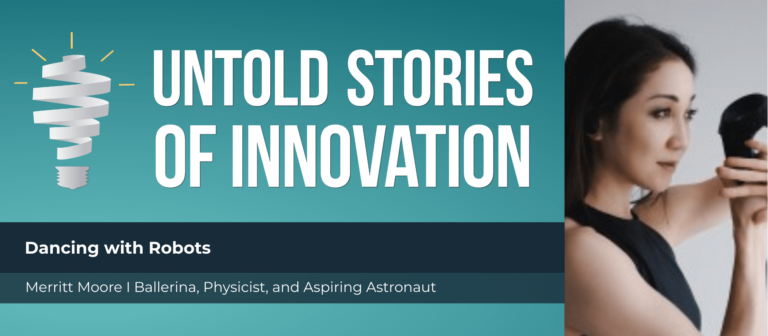Spurring Economic Vibrancy Through Innovation and Ecosystem Development with Wendy Lea
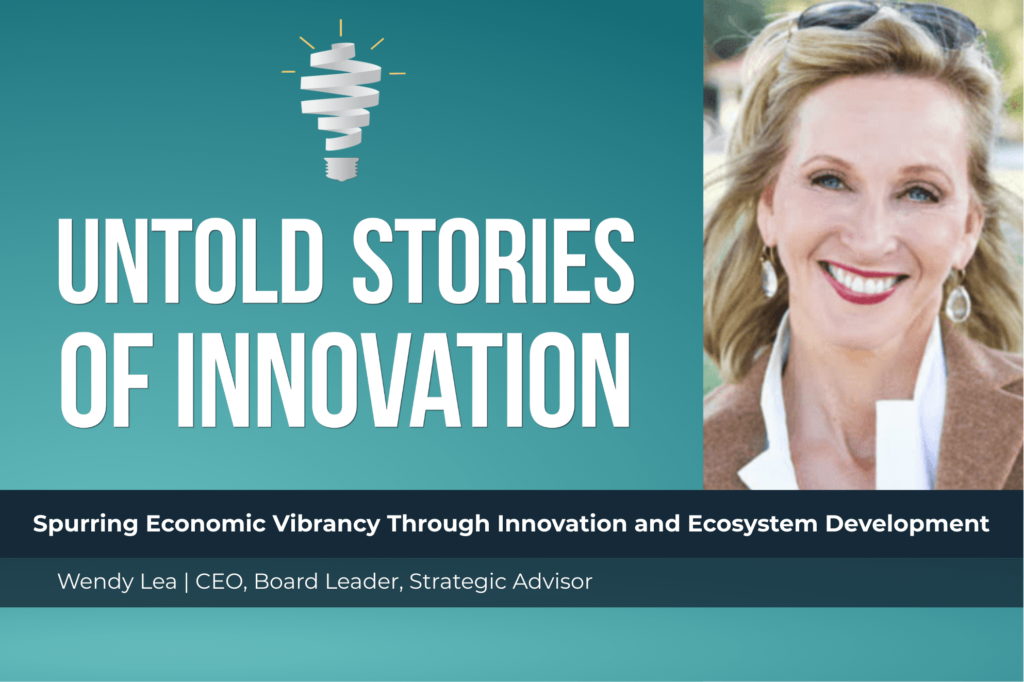
Spurring Economic Vibrancy Through Innovation and Ecosystem Development - Untold Stories of Innovation
“It’s not to say the way we’ve been doing innovation in the past is wrong. It’s not that black and white. It is that things are moving fast. Things are evolving. And our community and our people, be they entrepreneurs or large corporate people, professionals are now looking at the world differently relative to their role in it and their role in business.” — Wendy Lea, on spurring economic vibrancy through innovation and ecosystem development
Why do stories matter to the innovation process? What values can be instilled on spurring economic vibrancy through innovation and ecosystem development in innovators who share stories? How do innovation leaders inspire creators to tell and share their success and failure stories? In this episode, we speak with Wendy Lea—CEO, board leader, entrepreneur, investor, mentor and community steward—about how to utilize innovation to spark a larger regional identity that accelerates the speed of innovation in that area. Wendy reveals that storytelling about a community’s distinct culture is instrumental in striking regional, economic transformation. Local government, startups, entrepreneurs, universities, and corporations who celebrate shared opportunities for growth and innovation can transform their city’s future. For more on how to spurring economic vibrancy through innovation and ecosystem development, check out Wendy’s series of publications, as well as the latest Brookings Report, as discussed in the podcast.
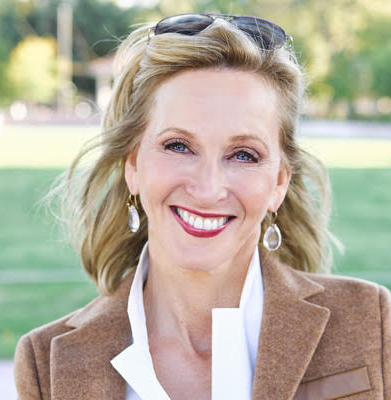
Having delivered a nice bandwidth of tech-savvy business solutions in 30 countries, Wendy Lea brings a global outlook to her entrepreneurial pursuits. Currently as the CEO of Cintrifuse, Wendy’s main mission is to forge all cutting edge possibilities and economic development into the region of Cincinnati and beyond. A leader at heart with entrepreneurial tenacity in her bones, her approach to collaboration is essential to the growth of building prosperous business’s across start ups, venture capitalist and big companies. This is her forte that have built steadfast successes, like On Target, Stratify and Get Satisfaction to name a few. A true innovation expert. Wendy has been recognized as a Women of Influence in both Silicon Valley and San Francisco. She brings her philanthropic side to the community, sitting on many non-profit boards, like The Health Collaborative, The Cincinnati Symphony Orchestra, and the venture-backed Xyleme.
This episode is powered by Untold Content’s Innovation Storytelling Training. Increase buy in for your best ideas in this immersive and interactive, story-driven experience. Where your teams refine storytelling techniques for their latest projects, prototypes and pitches—and get inspired by 25 epic examples of impactful innovation stories.

Katie [00:00:00] Our guest today is Wendy Lea, CEO, board leader, entrepreneur, investor, mentor and community steward. I’ve had the privilege of getting to see Wendy Lea as she grew and amplified Cintrifuse and the StartupCincy rallying cry. And now she is supporting ecosystem development across the country. Wendy, I’m so grateful to have you on the podcast.
Wendy [00:00:22] It’s fun to be here. Thanks, Katie.
Katie [00:00:24] So I know a bit about where your innovation story began, but would you please share it with some of the listeners?
Wendy [00:00:30] I would say the real beginning of spurring economic vibrancy through innovation and ecosystem development for me was not really as an entrepreneur because, you know, it wasn’t like “I need to go disrupt this” or “disrupt that.” It was more when I had the honor and privilege to lead Cintrifuse. I think that’s when all the dots in my brain came together and I realized that innovation was more than just technology or, you know, a new version of technology or a new category of technology. I realized that innovation first started with culture. And then there were the people that operated in the culture that actually made up the culture. And then there were technology innovations that were aligned or needed to be aligned with processes. So you know me well. So my brain kind of captured all these elements that really were part of my job as it so happened in Cincinnati and then the light bulbs went off relative to the role that I had agreed to take and was so excited about being a part of, which is building an innovation economy. So, again, the context of innovation for me did not come from corporate innovation. It didn’t come necessarily as a siloed thing to help that company. Didn’t really come from startups. I know both have innovation as a core piece of their growth. But for me, the reality of the value of innovation came when I got to see it through the lens of a community. It actually held all these different assets, and if those assets could interact in a seamless way towards a big vision, that would lift them all. And that would be a true innovation economy that could lead over time to economic vibrancy that would never be accomplished through traditional economic development.
Katie [00:03:05] It’s incredible. You know, so many of the voices on this podcast have come from big cos or startups or venture firms and the beauty of what you created and your team created through Cintrifuse, this public private partnership for entrepreneurial activity and an innovation ecosystem growth here in Cincinnati. It was about creating a constellation and seeing innovation across all of those different players and not really just going at it from the lens of any one player in that system.
Wendy [00:03:42] And so the challenge there. I mean, having a big vision is a challenge anyway, because most people, just as you said, that’s not what they’re even having to worry about. You know, they’re worrying about innovation through their functional responsibility or through the growth of their company or whatever. And by the way, that’s a gift too, you know, to be able to spark innovation in a way that it moves the needle that way. The complexity, though, of what we were attempting to lead in Cincinnati was so—it was so important to realize that it’s all these piece parts, the collaboration of the Constellation, if I could use your C word in my C word together. I mean, that’s really the future, I think, of innovation. And they don’t all happen at the same time. And that’s where patience and resilience is important. When I say they don’t all happen, if you look at all the nodes, as we call them, in the ecosystem in Greater Cincinnati, how the accelerators were doing, Brandery and, you know, Ocean and the one in northern Kentucky. All those don’t operate at the same rhythm forever. Right. They come and go. They have different kinds of entrepreneurs that come into their accelerator. So just using the node of ecosystem partners that look like accelerators as an example, you’re striking and pushing and growing that node as much in a systematic way as you can while you are getting the universities on line, right. To be more mindful of their role in an innovation economy while you are bringing in large corporates that are ready for that kind of activity because they’re not already at the same time. And the point I’m making is that you can hold a big vision around innovation. As a single lens or as a community lens. It matters not. You can hold that vision, but you have to check in and really understand that existing situation of each segment or node in that ecosystem. Because if you try to do too much at the same time, the whole thing implodes and then people give up because they don’t, you know, they don’t see the material benefit along the way. And to move a community, you have to demonstrate your ability to execute in any of these nodes, at least a little bit. Now that’s not disruptive. That’s just incremental. It’s demonstrating there’s an incremental path of innovation improvement in that node, right. And otherwise, you just create a hairball of blah, blah.
Katie [00:06:59] Right.
Wendy [00:07:00] And then people think you’re just whimsically talking off the top of your head rather than systematically executing based on your information and insight of that region’s assets. So I am, you know, having left Cincinnati now 13, 14 months ago, I’ve experienced the challenge of building an innovation economy, even with this very clear blueprint in my mind of how to do it. And when you’re trying to apply that, it’s not cookie cutter. There’s a lot of new Ott’s, forgive me, based on the culture of that region. The assets of that region, be that university assets, large company assets. The city’s point of view on innovation and just lining those up. To make progress in a way that one makes progress. That influence is the other node. Does that make sense?
Katie [00:08:03] Yes. Yes. And I’m thinking, you know, regional identity plays such a powerful role in that activity. And, you know.
Wendy [00:08:12] Beautifully said, I totally agree. And language precedes behavior.
Katie [00:08:18] Yes. Yes. So a quick flashback to my childhood. I grew up here in Cincinnati before we were identifying ourselves as a hub of innovation, as a growth center for innovation. And so I had no language around what an entrepreneur was. I actually did a little bit with the Kauffman Foundation, an elementary school, actually. So there was—it’s kind of a fun story. I came up with an electronic push button menu, which was supposed to be for fast food, or you could just drive up and push the button instead of talking to someone and now they actually have those.
Wendy [00:08:50] Oh, cool.
Spurring Economic Vibrancy
Katie [00:08:53] Yeah. So there was, of course, some support. And I think sort of part of the American dream is to be inventive and to create things and do and make. But in terms of an identity for the region. That was really centered around tech innovation or medical innovation, really some of the things that we see now emerging. It was amazing to me as I finished up my PhD at Purdue and had that pull to want to come back home to Cincinnati and be part of this community. When I came back, it was a different world and so much of that is thanks to the storytelling that Cintrifuse and your teams sparked with the hashtag StartupCincy and that identity. And I will be completely frank to say that the support that I sensed in the ecosystem and the way that our story was transformed as a result of that rallying cry, it made me believe that I could do it. And ultimately, you know, resigned from my academic faculty job and do this full time. And it continues to do that for people, I think, to help us all sort of identify ourselves in that way. Can you talk a little bit about the role of that StartupCincy language and how it played a role?
Wendy [00:10:16] Yeah, that’s a good question. First of all, thanks for coming back to Cincinnati and making a choice to be an entrepreneur. You know, it takes, as I say, more than just a little village. It does take a whole community. It does not just the startup community.
Katie [00:10:32] Right.
Wendy [00:10:32] Right. It is a whole community. And I certainly saw ArtsWave and the chamber and very elite, you know, well respected, highly regarded nonprofit organizations that happen to be well-funded, too. But I saw them support us, not just us Cintrifuse, but the idea of, you know, this identity that you’re referring to.
Katie [00:11:04] Yeah.
Wendy [00:11:05] A couple of things before I respond directly to the beginning of StartupCincy. It is important that we always remember relative to Cintrifuse and Greater Cincinnati, which includes Indiana and northern Kentucky. So this is a regional play. It’s a three-state play. It took me a while to understand that, but when I got it, it was very important, right. .
Ecosystem Development
Katie [00:11:34] Yes.
Wendy [00:11:35] Because of the influence we had on those other geographies, not just Cincinnati as a city, but it’s the business community, the Cincinnati Business Council, that should always be created—they should be given credit for their vision for their region. Without them looking around their peer city standings relative to risk capital. That we in the greater Cincinnati region were receiving for those tech-based entrepreneurs. Now there’s a lot of entrepreneurs. Let’s just talk about tech based that decide they can grow through other people’s money. VC money. Risk capital. Without them recognizing that, none of this would’ve been true. So that’s really important because someone in wherever the community as it could be, Tampa, could be a country. I’m working now in Taiwan, as you know. It doesn’t matter. There needs to be a group of people. They don’t all have to be businesspeople that decide it’s time for change.
Katie [00:12:45] Yeah.
Wendy [00:12:45] And it’s not to say the way we’ve been doing it in the past is wrong. It’s not that black and white. It is that things are moving fast. Things are evolving. And our community and our people, be they entrepreneurs or large corporate people, whatever they are, professionals are now looking at the world differently relative to their role in it and their role in whatever kind of business. I think that’s really important because I have now learned what a true asset that was for Cintrifuse.
Katie [00:13:23] Did you know it when you first came on as CEO?
Wendy [00:13:25] You know what. I did not understand it at all. What did I know about anything? I’d never lived in the Midwest. I mean, I knew P&G and Kroger—
Katie [00:13:33] You knew quite a few things. I mean, you scaled a business to incredible heights—
Wendy [00:13:37] I mean, I had no clue what I’d stepped into. I just knew that it seemed like the gifts I had, talent, knowledge might be helpful. And I agreed to come anyway. I want to make sure we hear that, because, again, that foundation had everything to do with my ability and more importantly, the team’s ability to scale at the pace we did. Because remember, we started with about a million dollars in seed money. Half of that was from the state. Half of that was matched by corporates that really didn’t know what they were matching. They just were communitarians. They were communitarians. They were capitalists in their day work. But when it came to us, they were just communitarians. But the story of StartupCincy really goes back to one thing I learned for sure in my close partnership and affiliation with TechStars. Although I never worked for them ever as an employee, I was an investor in their fund and a mentor for the Boulder accelerator way back in the early days and still am now. But I learned a lot in watching them do their community work and build startup communities. And one thing I learned—and then I learned about social media and storytelling while in California. So I came from a decade of social media technologies being on the rise and actually led a startup that was involved in that category. It wasn’t Twitter or Facebook or Google, but Get Satisfaction did some of that work and they leveraged the power of the web and unstructured data and social media. So I had learned just enough to be dangerous. So my two big masters relative to my ability to execute on something like StartupCincy first, while I was figuring out all the other nodes along the way really came from 10 years in the valley in San Francisco, the Bay Area and TechStars. So yeah, I say that because ecosystem leaders have to do—you have to like figure out what you know and what you don’t. And you’re going to lean into what you know and hopefully have enough courage to learn the rest. So I have to, you know, pay homage to TechStars and also to social media and Silicon Valley and Get Satisfaction. In particular Twitter and Facebook because I had to learn how those things operated, right. The power of a network.
Katie [00:16:19] Yeah. Yeah.
Wendy [00:16:20] That was really important. Okay. So that was that. Then it was really Eric Weissman who was my thinking partner and my execution partner. He was on the team already. I didn’t have to hire him. I was very fortunate to have him there when I first started, which was October of 2014. And so he, you know, he’s not a pure play marketing guy. He’s a lover of his community. He was born and raised in Cincinnati. He had a spark for entrepreneurship. He worked at some corporates. So he was perfectly suited to help me ringlead, if you will. And get a megaphone, if you will, and start branding, if you will. And I’m not a branding professional. I mean, that’s what P&G marketers do. I didn’t do that. But he and I were able to piece together in a very short period of time, getting help from LPK, and we had to leverage any help we could find because we had no people or no money. We were a startup. And I was not the founder of the startup, nor was I first the CEO. So think about that sense of urgency. I had to bring this to life quickly. But we could only find eleven startups that were in our database, but we knew that was silly. We knew there were more.
Katie [00:17:41] Yeah.
Wendy [00:17:42] So it was really under Eric’s leadership, when I was trying to figure out a bunch of stuff, that we decided to use the hashtag StartupCincy, which already existed. It exists because David Knox, who is a very esteemed member of the community, former P&G, co-founder of The Brandery. When I got there and I did know him because I worked with him at P&G when I was leading Get Satisfaction. He said, you can have that hashtag. Light it up. So that gave us an existing hashtag with Eric and we had nothing to lose, right, because there wasn’t a strong, in my humble opinion, strong momentum. There was some momentum.
Katie [00:18:33] Yeah.
Wendy [00:18:34] Because of CincyTech, because of HCDC, because of the brand research. To say there was no momentum is not true. I was trying to not just make it louder but create a narrative that we could systematically push that would put up tech-based entrepreneurship in the middle of the discussion. While I was doing my best to scurry around and figure out what else existed. Because I didn’t know. I didn’t know that corporate innovation was that big of a thing. I didn’t realize what a perfect inflection point we were in. I didn’t know how the universities were set up or not for entrepreneurship. I didn’t know a lot. But what I knew for sure, based on learning from TechStars and my partnership with them and based on my experience with social media, that if we could do a little bit of storytelling through a hashtag that already existed thanks to Dave Knox, we could be on our way. At least we’d know what the entrepreneurship community looked like.
Katie [00:19:48] Yeah. Yeah, absolutely.
Wendy [00:19:50] So, that’s how that happened.
Katie [00:19:51] It’s such a powerful story. It’s you know, I’m curious as you’re trying to pull together voices from all of these different nodes, as you say. How do you get them to try to speak the same language? Were there certain strategies that you used to build those relationships? Get them seats at the table together and help tech startups be able to, you know, get that pilot opportunity in our regional big cos and to get university talent recruited and all of that.
Wendy [00:20:23] Well, it’s interesting. And this would play—answering your question plays to a natural skill I have. And that is the skill of communication and presenting a story to others. So I’m an outbound person with deep fascination, though, for execution, so I’m weird like that. Like, I’m incompetent when it comes to outbound storytelling and I’m dedicated to internal execution across a plan. And because I’ve only ever been an entrepreneur—I only worked for one big company sans my early schooling, you know, when I was acquired by one. And so my whole life I learned about sprints and planning in short time periods, so I could iterate—this before I even understood all those words. Right. That’s just what I had to do naturally, because I didn’t have a lot of money. But what I decided to do in Cincinnati, which was so phenomenal to experience because it was a very tight community that was naturally inclusive of all these segments or nodes, naturally so. It’s the way the Midwest sees the world. That is not the way the West Coast sees the world. The Midwest has this natural, communitarian way of being.
Katie [00:22:15] Sure.
Wendy [00:22:16] And that played to my ability, my strengths as a communicator. So what I decided to do is to just, with Eric Weissman’s help, to nail the story enough. The story of what we were trying—vision and the story of what we were trying to accomplish in a very short period of time. Because, you know, I never planned to stay there forever. There was no need to. I had a role. I had a job. I was paid to do it. I was excited about doing it. I wanted to make a difference. But if you think about that and you don’t have a lot of money or a lot of people, you have to take the leader who’s naturally outbound and you have to start storytelling in every venue you can find.
Katie [00:23:01] Yes.
Wendy [00:23:01] No, think about it.
Katie [00:23:03] Right.
Wendy [00:23:03] I mean Eric would know all these stats. Lordy me. I bet I presented to, you know, 30 or 40 different groups like the first year.
Katie [00:23:13] Sure.
Wendy [00:23:13] With not even a very pretty PowerPoint, and it wasn’t that tied down with enough data. There was no data. It was just a big vision. But at least what I did is I started, to your point, embedding the language.
Katie [00:23:31] Yes. Yeah.
Wendy [00:23:33] Of not just tech-based entrepreneurship, right? But of something I knew they understood, which is economic vibrancy. And I was learning from my economic development partners. Joan Raider was leading Ready at the time. Right. She had to teach me what economic development was. I mean, I knew conceptually, but I never participated in it. So I had to take some of her language, some of the mayor’s language, some of the Ohio Third Frontier’s language. I learned a lot from Mike Venerable at CincyTech. So I had to squeeze all that knowledge in a narrative very quickly, realizing it would not be even close to perfect. But it gave me a platform to get out. And I spoke to the United Way people to, you know, the Queen City Club people to the you name it. I was out presenting because I was now a community leader.
Katie [00:24:32] Yes. That’s right.
Wendy [00:24:33] And by the way, it lit me up in ways I couldn’t even believe. But to your point, I had to get the story good enough to start. And then I got a lot of feedback and sometimes confused faces in the audience, like, what the heck is she talking about? I would go back and refine it, and then we would execute a little bit more. Then I’d add some data to it. So I got better over time, which is what professionals do if they’re paying attention to their work. But that’s really how it started. And then we had plans for strike points around StartupCincy. And as soon as I saw that momentum moving enough, far from perfect, but it started moving and people started gelling the interdependencies of the accelerators and everyone involved in entrepreneurship that was coming closer. Directionally, it was going in the right—not perfect. There were still meltdowns and fights about who did what. Whatever. But we didn’t—we couldn’t do everything. We were only the big tent that influenced and supported all the people on the ground and that included all the accelerators and everybody else. So what’s that got going? There was no need for me just to do that, right? Because it had its own juices then. And Eric and everyone else involved were as involved as they could be. And so then I got to go down and execute more deliberately relative to the VCs we’re investing in. Relative to the universities. Relative to the corporates. I mean, that was hard work, too. But that—we sparked a big tent that at least had people like you that were thinking about entrepreneurs, at least they were coming together with their t-shirts and their questions and their concerns because they didn’t want to be part of something that was just not going to be true. Right. They needed to feel that there was something real happening, that there was some change happening, that conditions were being set differently for them to thrive then equally entrepreneurs like yourself.
Katie [00:26:49] It’s unbelievably important, I think, to keep in mind how a city like Cincinnati was overlooked for innovation. You know, at the time, you know, early—you know, mid 2010s or early 2010s. Right. And this is still true. The most entrepreneurial activity is happening on the two coasts and most of the venture dollars are going to the east and the west coasts. But new research—you know, you and I like to geek out on all of the latest research around innovation activity. And, you know, I’ll link in the show notes, the latest Brookings report that you and I looked at together and you see potential innovation growth centers. First of all, you see more isolation in where entrepreneurial activity is happening, where innovation is happening across the nation. But you also see the Midwest lit up on a map showing that this is happening. These are potential centers and they’re growing and they’re increasing in their density in maturity of startups and activity. But I think it’s interesting that there’s a lot of space on our nation’s map that is not lit up. And to hear how a city like Cincinnati was transformed in such a short period of time. And that wasn’t only because we told a good story, it’s because we were active and made it happen.
Wendy [00:28:20] This is hard work. I mean, this is not about a tweet, right? This is really hard work. This meaning building an innovation economy, right? It sounds all fancy pants and very abstract. You have to make it come true by doing the work of attracting and developing and retaining entrepreneurs. And by connecting those entrepreneurs to really smart people inside large corporates and those people that might over time, not just mentor, but actually use your products or services and by helping you connect to resources that you need when you’re ready to use other people’s money if you choose to do that. It’s very, very hard work. So I think.
Katie [00:29:04] Yes.
Wendy [00:29:05] Yeah. So if you look at St. Louis and Kansas City and Louisville and Columbus and Cleveland and Nashville. I mean, this is a thing.
Katie [00:29:16] Yes. Yeah.
Innovation Economies Lead to Economic Vibrancy
Wendy [00:29:17] The thing of innovation economies. Now, I want to make a distinction here that’s so important to what I know to be true, and that is building a startup community as cool and fun and exciting as it is with a hashtag fill in the blank city and with a t shirt and with beer and pizza and all that and meet ups and a cool co-working space like a Union Hall or wherever it may be. That’s not enough.
Katie [00:29:49] Right.
Wendy [00:29:50] The startup community alone is the heart of the engine required to drive economic vibrancy. But the ecosystem later. And in this case, you know, Pete Blackshaw runs Cintrifuse and his job is to ensure that all the nodes, the segments of the ecosystem that have been introduced to an innovation economy over time is to keep them engaged. And that doesn’t just mean come to the annual meeting. OK, because ecosystem leaders do get wrapped up in a bunch of showy activities. I did. But I also—when I would go home at night after a bunch—a daylong of activities because we love those in Cincinnati. Right. I had to go home and think, how do I translate that activity—that room full of people that are finally getting our language and they’re understanding the role that the core of the engine the entrepreneurs have? How do I get them to apply the language inside their own entity so that it brings real benefit to their institution or their enterprise? That’s the trick. And that’s where the work is hard, because it’s not just me outbound marketing work. It’s equal parts of hard-core planning against a burn. Like you don’t have a lot of money and you can’t have a lot of people and all the things that I learned in startup land. Right. And I got to apply all those lessons. So I think, you know, it is now becoming a thing. And we should pay homage also to Steve and Jane Case and Rise of the Rest. That initiative that he started some seven years ago had a huge impact, at least in the middle of the country, because he would make big investments, not just—I don’t mean financial investments, but his time, his energy, his talent, he would ring his own bell of Rise of the Rest and everyone else’s bell, right. To prove not just to startups that they could do it and write a check for one hundred K in each city to one, but also, he would storytell. Steve himself and Anna Mason and that now Mary Grove, that whole team, they would storytell to business leaders and they would storytell to the political and community leaders. So in the spirit of your podcast series, I want to make sure those listening understand that at least in the middle of the country, he set conditions with his own energy and talent that were phenomenal and amazing to me as an outsider. And now I’m very involved as part of his XCOR expert network. I help his portfolios. I go with them sometimes to their city tours. They’re just about to take one, you know, to Arkansas and to Kansas City. They’re working on their—I don’t know. I think it’s number nine or 10. But that is to say, back to your comment and your own expertise, Untold Content’s expertise around storytelling, that the story—the stories—come from a big vision which someone decides there’s real opportunity for them. Their region, their business in. Yes. And then the storytelling is around the success of implementing the vision over time. It’s not one story about one entrepreneur. It’s not only the story of the entrepreneur that raises a bunch of capital, right? It’s a story of the dark night of the soul as well as the big race. It’s a story of corporate innovation at a time when their sector was being disrupted. It’s a story of ArtsWave being a part of talent attraction in Cincinnati. Because of their own ways of innovating. So every leader in Cincinnati was able to do their part in building out an innovation economy in a very critical, essential part of Ohio, southwest Ohio, a very interesting part of Kentucky, northern Kentucky, and an equally important part of southeast Indiana. Who was on fire relative to Indianapolis. On fire meaning things are going well, but they need to spread those fires out to other parts of Indiana as well. So that’s a point of view I wanted to share.
Katie [00:35:01] I’m so grateful for it. Something else that we haven’t talked too much yet, though we mentioned Rise of the Rest. One of the most brilliant strategies, in my opinion, around Cintrifuse was your ability to get venture capital into our city and then really inject it. And that has to do with your fund of funds approach. Can you speak to that a little bit?
Wendy [00:35:26] Sure, yeah. A thumbnail on that, because it goes back to the Cincinnati Business Committee, and the number one problem they were solving for relative to the new public private partnership they established called Cintrifuse was the fact that they were so low. They were so in the depths of despair—well, we were. They at the time I wasn’t there. Relative to risk capital coming into the region. It was minuscule. It was sad. It was pitiful. And so McKinsey helped the Business Council do research to see why that was and to look at other options or other strategies that they might employ that would catalyze improvement. Right.
Katie [00:36:13] Yes.
Wendy [00:36:14] And that’s when they raised their first—the first fund of funds. It’s called the Cintrifuse Syndicate Fund. And all the large corporates were LPs. The ringleader of that discussion was at the time the CEO of Procter and Gamble. His name was Bob McDonnell. He’s been gone for some time, but he was a nontrivial part of the leadership team, along with Tom Williams in this first fund of funds. And it was very controversial and it still is. And the reason it was controversial is because the money was raised in Cincinnati through very large corporates. And now that those LPs have been expanded to northern Kentucky and to other parts of Ohio. But it was raised and then it was invested in VCs not in Ohio or Kentucky or Indiana.
Katie [00:37:16] Right. It was such an interesting—
Wendy [00:37:22] It was a national play.
Katie [00:37:24] And that story was hard, right? That’s a hard story to convince in a communal culture like in the Midwest.
Wendy [00:37:33] Horrific.
Katie [00:37:34] Yeah, unheard of. Right. Why didn’t you invest in startups in your backyard or only in venture firms here?
Wendy [00:37:38] That’s right. We didn’t even directly invest. That was not the prime reason. Right. We did some direct investing after startups were doing really well and had raised rounds and it was derisk. But mainly the funds strategy was about getting exposure to highly proven early stage seed funds, not just on the coast but across the US. And the benefits to that strategy are and have been non-trivial to the success of Cintrifuse. And they are threefold. One is to return capital to the LPs. This is not a nonprofit. The fund of funds is a for profit entity. So we want to return capital like every other fund to funds. So we have to make good investments. Tim Schigel, Sarah Anderson, founding team. Smart, smart, smart. They ensured we did that, right. Number two benefit is to provide the corporates access to early stage innovation. Well, you say, well, why would they need that? They can get their own access; it is P&G and Kroger and Children’s Hospital. Anyway. Well, because they would get access to different kinds of innovation like over time. It was well invested in and been de-risked. Right. So that was good for them. They wanted access to early, early stage innovation. And the VCs who were looking at lots of deals in different categories. This is a cross-sector play, right.
Katie [00:39:23] Absolutely.
Wendy [00:39:24] Then the third benefit, which to us was almost the most important. When I say to us, I mean the Cintrifuse overall team, and that is to give our entrepreneurs a chance to develop relationships with VCs that likely they would have low chance of meeting without this fund of funds. Right. And so as their metrics improved, as they saw growth, we wanted to be prepared to make introductions that matter. We couldn’t make the VCs invest. That wasn’t our job. That would be silly to build that into commitments. Why do that? That creates adverse selection. But we wanted to make sure that we had a network of early stage VCs that we had invested in as well as VCs that we wouldn’t invest in for a range of reasons. They didn’t have a proven track record or whatever. They were emerging managers. We needed them to know them as well. So the fund was a flypaper strategy to lots of VCs, to the Greater Cincinnati area through a relationship with Cintrifuse and their interest in having good deals. To knowing our corporates, it was a win win win. It was a maximalist strategy, for sure.
Katie [00:40:56] Absolutely.
Wendy [00:40:58] Complicated.
Katie [00:40:58] And it’s paid off.
Wendy [00:40:59] And it’s paying off. But there’s a long runway here. Right. It will pay off over time. This is not a short-term fix and not a short-term strategy. And everyone knew that. Still, though, we have to have a lot of resilience and patience and execution capacity to continue to iterate the strategy so everyone sees benefit. Yes? The VCs, the corporates, the entrepreneurs, our advisors. It’s very governed, this asset, as it should be. So I learned so much. I mean, honestly, it was my first time to lead this kind of an investment strategy or fund. Not possible without the advisory board we had and Tim Schigel and Sarah Anderson and all those, Nick Faulkner, that supported them. So what an honor it was to learn about it. To be part of it. And now to share that expertise with other states, which I do all the time. As you know.
Katie [00:42:09] Yes. Tell me, you know, when you’re traveling around the world and you’re traveling to different cities inside of our nation as well. What sorts of stories do you find yourself sharing around how to leverage innovation in order to create economic vibrancy?
Wendy [00:42:30] Well, the story is, I’m going to go back to the framework I discussed when we first started. And that is. First, there needs to be a cultural understanding by the state, the city, the region and the country. There needs to be some sensitivity that there are things happening around them that are bringing some unique pressure to them that needs to be investigated. Institutions that have been doing the same thing for too long and maybe are beginning to be perceived to not bringing the value that they once did. Right.
Katie [00:43:23] Sure.
Wendy [00:43:23] That cultural observance, if you will, is the storyline that I try to stay on first because you can’t force this. Right. But what we know is all geographies have a responsibility to their existing citizens to provide vibrancy. Vibrancy through schools, right. Through government services, right. So there are cultural elements that either lift that up and open it up—lift and open, so people can start having that conversation. Right. And I remember even when Jill took on the role as CEO of the chamber, because I had been there a couple of years before she became that leader. I mean, she’s a great example. So the Chamber of Commerce in Greater Cincinnati, they knew that there was a new culture happening. Take me out of it. They knew that without me telling them they had to do it. So I’m looking for those examples of leadership changing, not just, you know, women leadership or people of color of leadership, but I mean, is leadership awake of what’s required now to ensure the future? There’s a future for the region. And so I look at the cultural element, and I must say again, everything—this I learned in Cincinnati. I look at the universities deeply. It took me a long time to figure out how a university really operated as an institution. I was very naive about that. So I had a lot to learn. But again, they are a central asset to economic vibrancy because they are in charge of educating youth, making them feel hopeful that they can get a job. And those institutions need to be looking actively at ways to keep those smart, bright, motivated, ambitious humans in their own dirt. And to give them optionality relative to jobs. So I think it’s cool that so many Miami grads go to P&G. I think that’s way cool. And I think it’s way cool that so many UC grads, you know, from the engineering school go to the university—go to Kroger. All that’s cool. But I know for sure that young humans in these schools see the world with a very broad lens now, and they don’t always want to do just what their mom and dad did. Right. And even though their mom and dad may be corporate executives—very esteemed, highly regarded corporate executives. That does not equal that they want to do that. So I think universities have such a significant role to play. And I think they’re waking up to that.
Katie [00:46:41] I do too.
Wendy [00:46:41] We’re so fortunate because Greg Crawford, the president of Miami, is an entrepreneur himself. He’s very actively involved, as is his school, in everything going on in StartupCincy. University of Cincinnati. Beautiful example of now activating their innovation corridor. Yes.
Katie [00:46:59] Yes.
[00:47:00] And NKU. Very, very active across the river with their—all their digital talent and their cyber security program, which is the second one. Those people get jobs before they leave. Both startups, you know, they go to do startups and they go work for the government. These are cyber security brains. Right. So I think, you know, when I’m in a city, I’m seeing what role the universities play. I’m seeing what role, what I would call the infrastructure enterprises like the chamber play. I’m looking at the language of the mayor or the government, and I’m saying, OK, what are we talking about and what are your talking points relative to the future of your community? You know, and so I can pretty quickly assess by doing, you know, just secondary research, kind of the cultural situation and how they’re maneuvering—what policies, what programs, what entities they’re engaging. Of course, I can look for the entrepreneurship community. I can look for the startup community. That’s the easiest thing for me to do. But now that I’ve had this other experience, I’m looking across the board, the whole ecosystem to see are they on the right track? I mean, I’m not trying to judge it as much as I’m trying to coach and advise and let them see that just going to get another big factory from Brazil or Germany or to get Amazon’s second headquarters or Google to invest in a, you know, a campus like they do here in Boulder? Those what I call traditional economic strategies alone are not going to keep you and your family in a region. It’s not going to happen. Right. Because you need to see that there are cultural elements. You need to see that people are not just cool coffee shops, that they’re places you can go to see people like you. Right. That you can connect with and feel a part of. That vibrancy is not just tech talent. That’s a dimension of it. And this versification and the inclusion strategy of a region has never been more important than it is now. And I’ll end on this because you ask about all these other cities. If you think of all the cities who have now been vacated because a big manufacturing plant was shut down or the coal mine was shut down. I mean, we could even play an immigration card and think about bringing lots of people that want community and want to work into places that have been gutted. And that may not be a tech economy play, but that may be a play for people to come into our country and to actually bring life back to a city or region through for whatever reason was gutted because of one industry’s disruption. Yes? Like the coal miners. And I think that this whole notion of entrepreneurship is very broad. Although my job is already—always been around tech itself, because tech is an enabler and it’s horizontal. Right. And the jobs are high paying. There are all kinds of good reasons to focus on that part of entrepreneurship. Mainstream entrepreneurship is just as important. Bootstrapped entrepreneurship without other people’s money—just as important. So I think the dream of America is that people can come here with the right spirit, work hard, build a business, take care of their family and continue that tradition for generations to come. And that’s what I’m excited about for us and our future here in the United States.
Katie [00:51:19] If you are inspired by these ideas and you want to dive in even more, Wendy, you’ve published an incredible series on economic vibrancy where you’re looking at each node of this ecosystem and thinking about how to utilize innovation to spark a larger regional identity and to accelerate the speed of innovation in those regions. So I’ll link it in the show notes.
Wendy [00:51:44] Thank you.
Katie [00:51:45] It’s a beautiful series. I’m so grateful that I had you on the podcast, Wendy. Thanks for making time—
Wendy [00:51:48] No, me too. It was an honor, and thanks for all that you guys do for Cincinnati and that you’ve done for me as a partner. So I can’t wait to listen to the podcast and I’ll do my part to share it with others that I know are trying to learn about innovation economies.
Katie [00:52:05] Awesome.
Wendy [00:52:05] Okee dokee.
Katie [00:52:05] Thank you, Wendy. I hope you have a good day.
Wendy [00:52:07] My pleasure.
Katie [00:52:08] Talk to you soon.
Wendy [00:52:08] Bye bye.
You can listen to more episodes of Untold Stories of Innovation Podcast.
*Interviews are not endorsements of individuals or businesses.
You can listen to more episodes of Untold Stories of Innovation Podcast.

